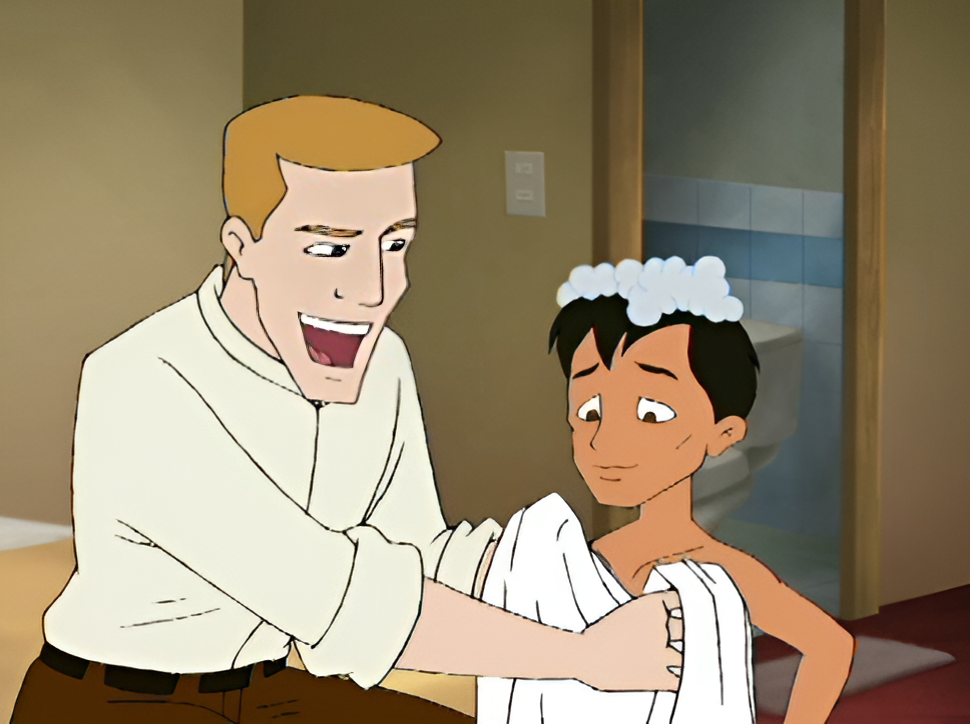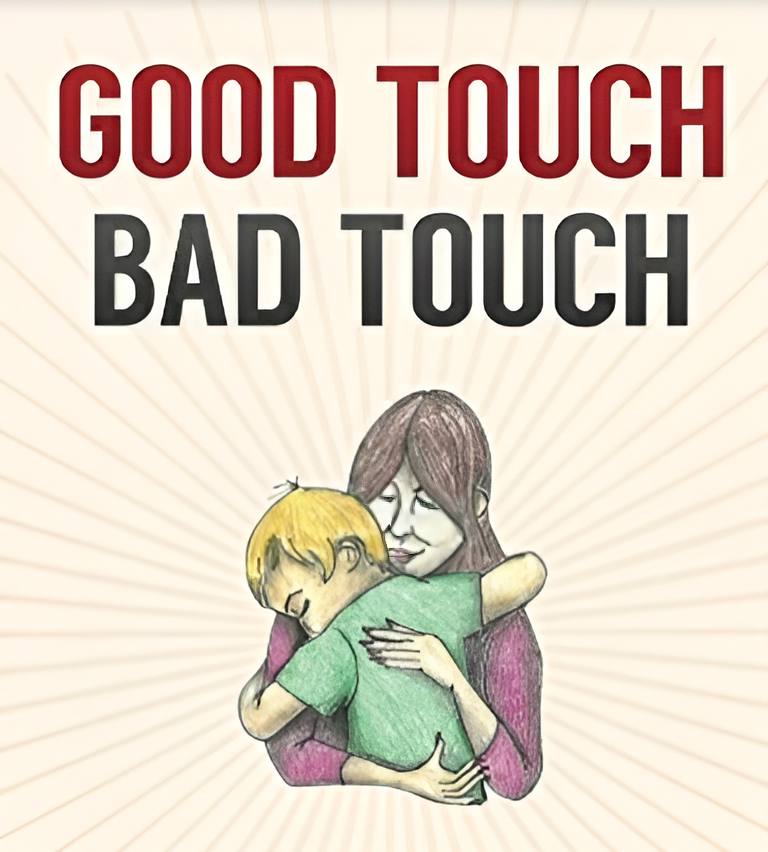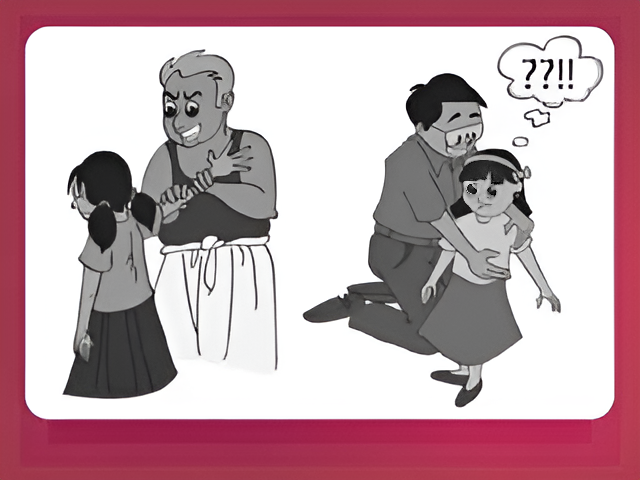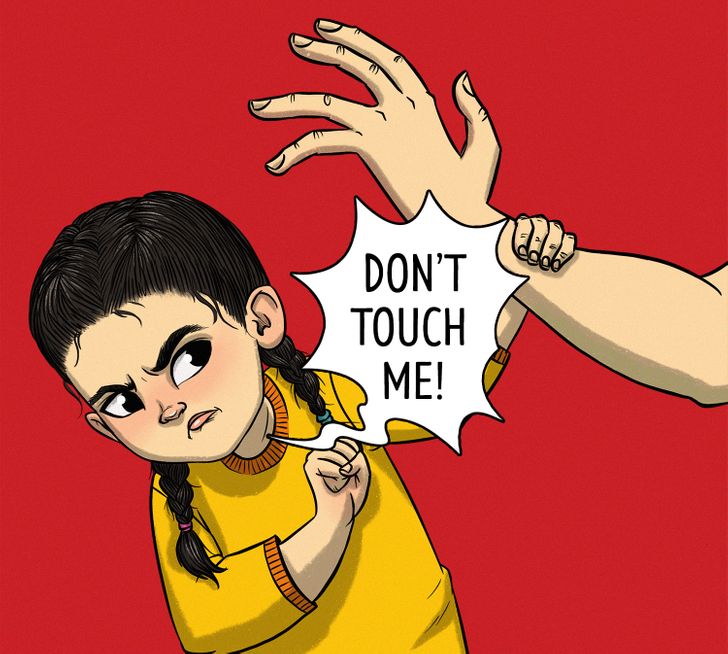Explain to your children there are three kinds of touches.
Good touches. A nice touch. These contacts make children feel safe and positive and can make children feel cared for and important. Safety touch
may include a hug, a pat on the back, and an arm around the shoulder.
Bad touches. Bad touch. These are touches that cause physical or emotional harm to the child
(e.g. hitting, pushing, pinching, kicking). Tell the child that this touching is not okay.
Unwanted touches. No contact necessary. This touch may be safe, but the child
does not want to be touched by that person or at that moment. Children can say "no" to unwanted touches, even from acquaintances.








